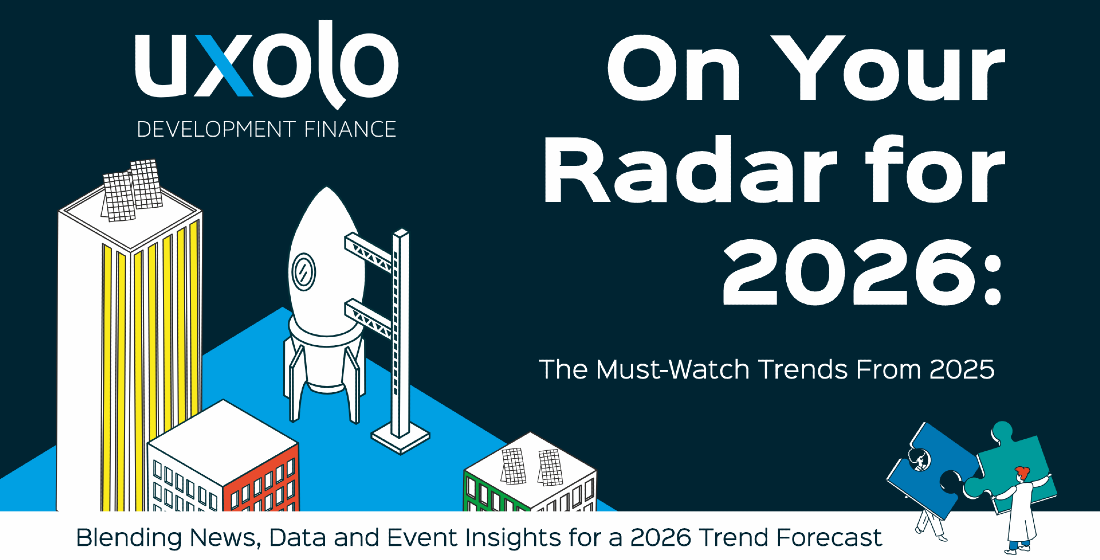Greenwashing: are regulators going to get on top of it?
Coherent global greenwashing regulation and ESG transparency is as much a problem for the private sector as development finance if the two are to complement each other in realising the UN's SDGs.

The commercial sector is facing fallout on multiple levels from the growing problem of greenwashing and regulatory attempts to curb it. But the problem is not just a private sector one. Given funding predictions for the energy transition, ESG development and blended finance are heavily reliant on nurturing and growing private sector participation, the greenwash issue is as much a problem for development finance as it is for commercial investors.
There is also the issue of where to draw the ESG line in, for example, a blended financing. Do the ESG credentials of any given financing rest solely on whatever asset is being financed and its current and future ESG impact? Or should the broader ESG credentials of participants in the financing also be taken into account? And if those broader credentials are to be taken into account, what data is available on which to make that call? At the moment, very little.
Upcoming European regulation
Development of sustainable market frameworks are accelerating, but approaches to regulation in the US, Europe and Asia, while having a degree of crossover – China has partnered with the EU on taxonomy classification for example – are still fragmented. There is not even a global market standard for disclosing sustainability information.
Regulation needs to catch up with green technology and sustainability market growth, which, according to Allied Market Research, has a predicted CAGR of 21.9% from 2021-2030. In an effort to control the quality of this market, the European Commission outlined the Sustainable Financial Disclosure Regulation (SFDR), which allotted environmental, social and governance (ESG) aligned investments into two categories – Article 8, ‘light green’, and Article 9, ‘dark green’ – quickly came to represent a growth market with data from 2021 showing that they represented more than 42% of Europe’s fund assets, with 25.2% in Article 8 and 3.4% in Article 9.
Since then, the European Commission has proposed new regulations to improve upon the SFDR with the 2022 Corporate Sustainability Due Diligence Directive (CSDDD). With the updates, the scope and scale of companies’ due diligence requirements will greatly expand, now being applicable to all companies that have 500+ staff and make a €1.5 million plus turnover in the EU. The new obligations remain self-assessed but oblige companies to update investors annually on their climate plan, which should demonstrate their business model’s alignment with the Paris Agreement. The regulations also make ESG-labelled funds liable to litigation from investors for failing to appropriately mitigate or reduce any negative ESG impacts, resulting in financial penalties or even sanctions.
Another development of the regulations will be a new taxonomy around the definition of ‘value chain’, CSDDD’s new designation for supply chains. Value chains will encompass the entirety of companies’ operations and subsidies that have a direct relationship with the provision of goods and services. The impact that this definition and the tightened regulations could have on ESG investments has gained some nervous attention from both clients and asset managers, but the story is larger than this.
In a recent presentation on sustainability and regulatory agenda, Matt Townsend, co-head of the International Environmental, Climate and Regulatory Law Groups at Allen & Overy, announced, “clients are facing a regulatory and policy blizzard … in the midst of the most interventionist redirection of private capital since WWII”. Within the fast-expanding ESG market, CSDDD was proposed in response to the emphatic demands of investors and clients for the end of greenwashing, as the majority of ESG-labelled portfolios’ green standards were not meeting investor expectations. Article 8 funds in particular received substantial criticism for being too broad, with Morningstar data finding that two-thirds of such funds targeted between 0-10% minimum exposure to sustainable investments. In light of these criticisms, in 2021, clients withdrew more than $30 billion from these products, instead investing in Article 9 which saw a simultaneous $6 billion inflow.
The greenwash barrier
Greenwashing is a frustrating barrier for investors. “When you scratch the surface of what ESG is … you find out that it’s actually a bunch of tech companies because they don’t use that many natural resources”, said MOBILIST’s Tara Sabre Collier in a podcast interview with Uxolo’s Jessica Brown. “Or it’s actually a natural resource company that’s doing things marginally better than their competitors at Exxon mobile”.
CSDDD’s value chain definition was created with the aim of tackling the related phenomena of ‘entity greenwashing’, referring to the practice of companies which introduce ESG-labelled funds whilst using their other entities or subsidiaries to engage in brown investments.
Despite the current volatility, a fresh set of finalised, tighter regulations aims to increase the data available on private companies’ ESG alignments, making the sustainable impact of investments clearer to all parties. This may have been good news to investors and clients, especially in the blended finance sector where private capital has cited patchy data as a significant factor holding them back from entering energy, risky markets. Not only data, but deciding on a standardised taxonomy would allow both actors to realise their desires for ESG funds, which Townsend summarised as “we want safe harbours … we need something simple … [that says] that’s what green means”.
However, Patricia Pina, head of product research and innovation at Clarity AI, says: “While regulatory moves and corporate disclosure regimes are crucial, they are only useful if the data is reliable and investors and companies can easily compare and analyse the information provided.” Unfortunately, whilst increasing the due diligence responsibilities of companies, CSDDD does not fully deal with the issue of patchy data and the absence of standardisation around ESG impact evaluation. Definitions around green and even around the proposed value chains remain ‘malleable’, according to Townsend, and methodologies for evaluating impact and globally standardising the sector remain neglected. This runs the risk of not simplifying the sector but causing investors delays and dismays with a minimal impact on greenwashers.
The increased scope of due diligence could impede the efficiency of blended finance efforts further with MDBs and DFIs already facing heavy criticism for their tight-lipped disclosure agreements. “Greater transparency is essential because we are talking about the expenditure of public resources and it is very difficult … to know what DFIs are actually accomplishing”, says Rob Mosbacher, former CEO of OPIC. “The global effort to reduce poverty will increasingly depend upon private capital flows and the degree to which DFIs can facilitate greater investment in low and lower-middle income countries”.
The problems are many but key issues are global fragmentation on (i) taxonomy, (ii) greenwashing, (iii) carbon markets, and (iv) data standards. As Townsend says,”you’re only going to solve the carbon problem if you solve the energy system”, and solving this energy system necessitates tackling how ESG is impacting developing markets, and standardising this impact evaluation methodology and taxonomy.
In order to realise the UN’s sustainable development goals (SDGs), investors need to plug the global financing gap, currently estimated at $3.7 trillion. Development finance institutions are undertaking the blended finance strategy of ‘millions-to-billions’, where their ability to offer millions in senior debt and guarantees in risky markets will allow private capital to invest billions with confidence. But without coherent global greenwashing regulation and consequent ESG transparency, the drive to do that faces an unnecessary additional hurdle.





